Alabama pension fund now sole owner of local newspaper chain

Alabama’s employee pension fund, with about 350,000 members and some $40 billion in managed assets, has become sole owner of one of the largest chains of local U.S. newspapers, the company said Thursday. CHNI LLC has been acquired by the Retirement Systems of Alabama, the company announced in a statement. The newspaper group includes 68 daily newspapers and more than 40 non-dailies plus websites in 22 states. The Montgomery, Alabama-based newspaper group is being spun off Raycom Media Inc., which is being purchased by the Atlanta-based Gray Television Inc. Raycom was owned by the retirement system. CNHI, which began as a small newspaper group in 1997 and previously operated with the state retirement system as its creditor, will gain stability through the acquisition, chief executive Donna Barrett said in the statement. “We are very excited about working with RSA again because of its dedication to the crucial role of newspapers in keeping the public informed on what is happening in their communities and beyond,” she said. Among CNHI’s newspapers are the Valdosta Daily Times in Georgia, The Tribune Star in Terre Haute, Indiana, the Gloucester Daily Times in Massachusetts, The Meridian Star in Mississippi and the Niagara Gazette in Niagara Falls, New York. Financial details weren’t announced. Alabama’s pension fund has other non-traditional investments including golf courses, airliners and the largest office building in New York City, 55 Water. Gray Television, which began as a regional broadcaster, owns or operates stations and digital properties in 91 television markets nationwide with the acquisition of Raycom Media. Republished with permission from the Associated Press.
Personnel note: UAH President Robert Altenkirch announces retirement
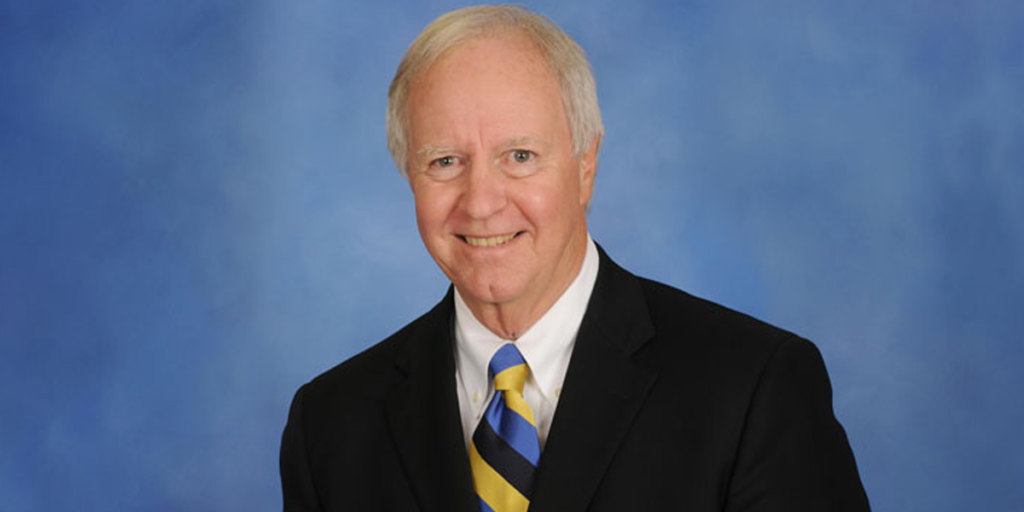
Robert Altenkirch, president of The University of Alabama in Huntsville announced his retirement on Monday. Altenkirch sent a memo making the announcement to faculty, staff, and students. “It is an honor, a privilege, and a pleasure to serve as President of The University of Alabama in Huntsville, and I look forward to us continuing on our trajectory of progress this coming academic year,” Altenkirch wrote. In the memo, the 70 year old who’s in his seventh year at UAH, detailed he will remain in position during the 2018-2019 academic year until his successor is chosen. Altenkirch has served as the president of UAH since September 2011. Prior to that, he was president of the New Jersey Institute of Technology. Huntsville Mayor Tommy Battle said he appreciates all of Altenkirch’s hard work. “President Altenkirch’s success at UAH is clear to see. The City of Huntsville is appreciative of all his hard work on behalf of UAH to achieve record setting results that have had a direct impact on the lives of students and the economy of the Rocket City,” Battle said. “Bob has been a great partner to Huntsville and the entire North Alabama region, and we wish him all the best in his retirement.”
State Rep. Patricia Todd, champion for LGBTQ rights announces retirement
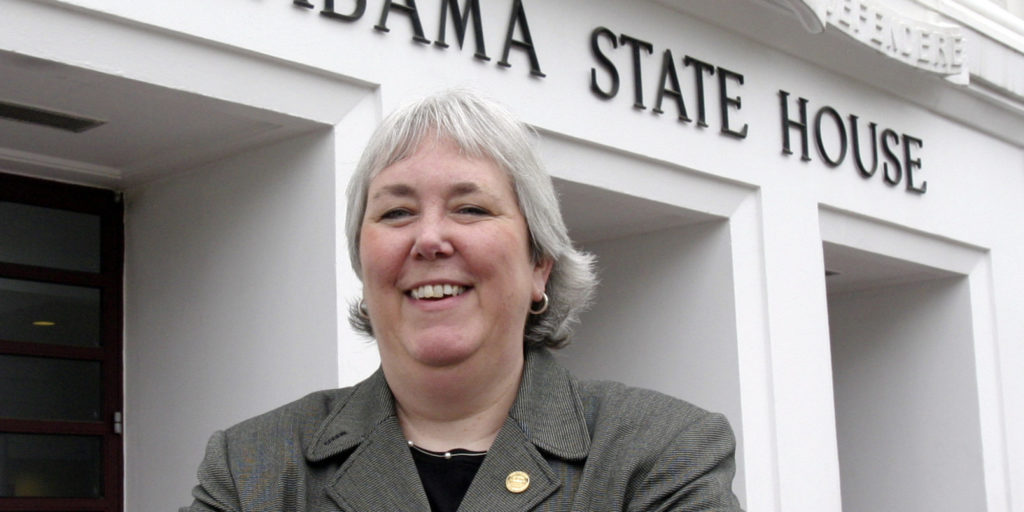
LGBTQ rights champion Alabama state Rep. Patricia Todd announced that she not seeking re-election on Monday. The Birmingham-Democrat confirmed her decision in a Facebook post Monday night. She wrote: It has been my honor and privilege to serve the constituents of House District 54 for the past 12 years. I have learned so much, met some incredible people, and I hope I have made a difference. So I am not running for reelection. The current ethic laws and the time to serve as a legislator create a barrier for me to secure full time employment and it has created a financial burden on my family. I love my role as a legislator. I will miss having a hand in crafted public policy, but hope my next career allows me to stay engaged. I promise that I will assist in any way possible to help my successor be an affective legislator. Todd is Alabama’s first, and only, openly gay lawmaker. She was first elected in 2006 and has served as the District 54 representative for the past 12 years.
Retire in Alabama? New analysis says state is among worst for retirees

Are you looking for the perfect place to retire? Then you may want to look some place other than the Yellowhammer State — it was ranked the tenth-worst state to retire in a new study released Tuesday. With almost 30 percent of all non-retired adults having no retirement savings or pension, the personal-finance website WalletHub released its report on 2018’s Best & Worst States to Retire. To help retirees find a safe, enjoyable and wallet-friendly place to call home, WalletHub analysts compared the 50 states across three key dimensions 1) Affordability, 2) Quality of Life and 3) Health Care, broken down further by 41 key indicators of retirement-friendliness ranging from adjusted cost of living, to mildness of weather to health care providers per capita. Here’s a look at how Alabama ranked in retiring (1= best; 25= avg.) 19th: % of population aged 65 & older 38th: Property-crime rate 38th: Health-care facilities per capita 44th: Elderly-friendly labor market 49th: Life expectancy Among the best states for retirement were Florida, Colorado, South Dakota, Iowa, Virginia, Wyoming, New Hampshire and Idaho. And the worst? Kentucky, New Jersey, Rhode Island, Mississippi, Arkansas, West Virginia, Louisiana, New Mexico and Hawaii round out the top nine (in order of ranking). See how Alabama compares to the rest of the country: Source: WalletHub The states were compared and ranked with data gleaned from various public and other records including the U.S. Census Bureau, Federal Bureau of Investigation, Council for Community and Economic Research, U.S. Bureau of Labor Statistics, Retirement Living Information Center, Genworth Financial, United Health Foundation, County Health Rankings, Centers for Disease Control and Prevention, Centers for Medicare & Medicaid Services, Charity Navigator, Gallup Healthways, GolfLink, The Tax Foundation, America’s Scenic Byways, NOAA Office for Coastal Management, U.S. News & World Report, Institute for Health Metrics and Evaluation, and WalletHub research.
Birmingham named one of Livability.com’s best places to retire, 2017
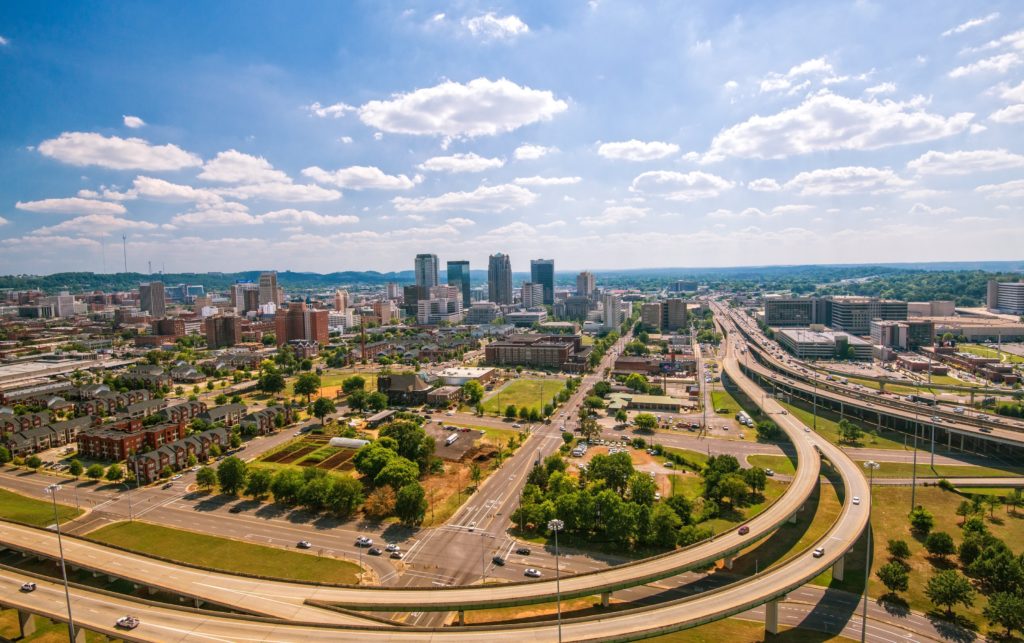
Today’s seniors are in search of a lifestyle as diverse and dynamic as they are. While many folks will choose to remain where they’ve spent most of their lives and built their communities, others will look for new adventures in a different location — and deciding where that place will be is an extremely important choice. With that in mind, Livability.com, a site focused on exploring what makes small-to-medium sized cities great places to live, has just released its Top 10 Best Places to Retire, 2017. Coming in at no. 7 on this year’s list is Birmingham, Ala. The Magic City has evolved dramatically over the years. The former steel town is now one of the leaders in the health care industry, with more than a dozen hospitals, as well as a premier medical school and research facility in the University of Alabama at Birmingham. The city center has been revitalized, earning accolades as one of the nation’s 10 Best Downtowns and one of the top Spring Break Destinations for Families. “This year’s retirement cities list perfectly reflects the diverse, dynamic lifestyles of today’s retirees,” says Winona Dimeo-Ediger, managing editor of Livability.com. “Some of these cities might surprise you, which is a good thing, because retirement looks very different in 2017 than it has in the past.” The full list of best retirement cities was determined by analyzing a range living characteristics including health care, climate, crime rates, cost of living, housing costs and access to recreational activities. Here are all top 10 places to retire in the U.S: Walnut Creek, Calif. Reno, Nev. Boca Raton, Fla. Plano, Texas Sioux Falls, S.D. Vancouver, Wash. Birmingham, Ala. Littleton, Colo. Bismarck, N.D. Salt Lake City, Utah To determine these rankings, Livability.com experts examined surveys and data from the U.S. Census Bureau, Medicare, Esri, NOAA, Walk Score, the EPA and other sources, and crunched the numbers to determine the best U.S. cities for retirees. Research shows that seniors care most about health care, climate, crime rates, cost of living, housing costs and access to recreational activities — the site found 10 cities that deliver on all counts, each offering a completely different lifestyle to fit a wide range of tastes and interests.
10 places in Alabama where your social security will go the furthest

Planning where you’ll spend your retirement can be difficult, especially for folks who will be relying heavily on Social Security as a main source of income. There are, however, places across the Yellowhammer State where Social Security goes further than others and in a new study, SmartAsset, a New York-based financial company, has crunched the numbers to find them. In its third annual study, SmartAsset analyzed Social Security income, cost of living data, and taxes across all counties to determine where people are getting the most bang for their buck when it comes to their Social Security checks. Here’s a look at the top 10 places in Alabama where Social Security benefits will cover the most of a person’s cost of living after paying taxes: Rank County Cost of Living Annual Social Security Social Security Taxed? Social Security Goes Furthest Index 1 Morgan, Ala. $17,292 $18,225 No 77.23 2 Lauderdale, Ala. $17,594 $18,247 No 75.66 3 Colbert, Ala. $17,762 $18,268 No 74.83 4 Lawrence, Ala. $17,128 $17,581 No 74.53 5 Cherokee, Ala. $17,303 $17,471 No 72.93 6 Etowah, Ala. $16,766 $16,895 No 72.71 7 Pickens, Ala. $16,790 $16,918 No 72.71 8 Chilton, Ala. $17,251 $17,313 No 72.34 9 Marion, Ala. $16,681 $16,696 No 72.07 10 Marshall, Ala. $16,977 $16,740 No 70.66
Daniel Sutter: The retirement savings problem
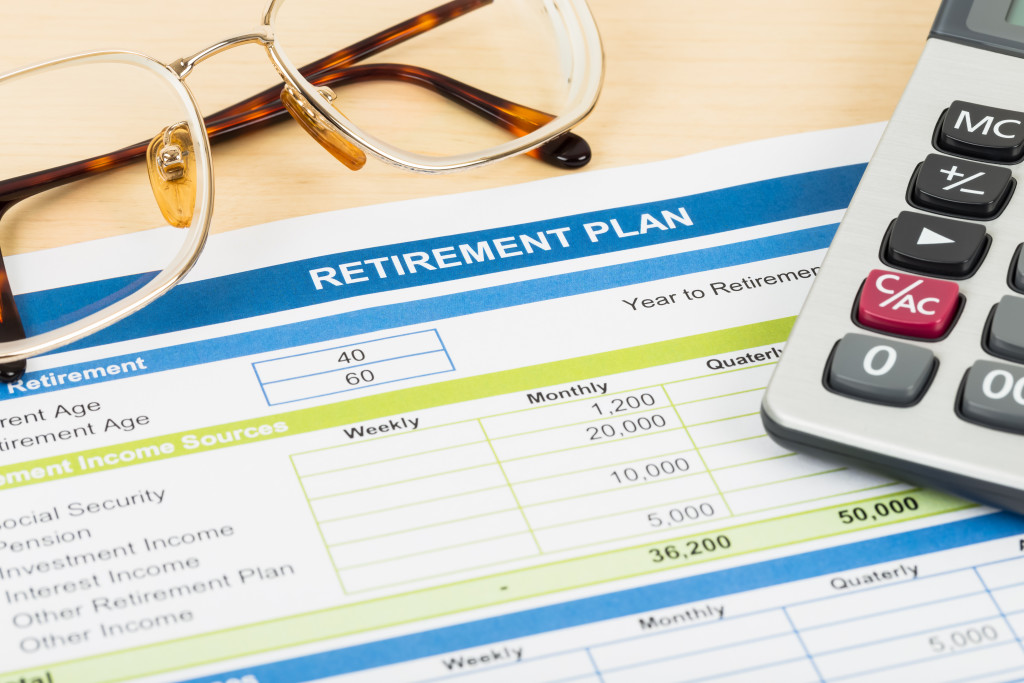
Americans seem to have a problem saving for retirement. This problem has implications for our own lives and for employer-provided pension plans. Over 60 percent of American workers currently have employer-provided pensions. The self-employed and workers without pensions can use Individual Retirement Accounts (IRAs). Both pensions and IRAs defer taxes on contributions and investment earnings until retirement. Employer-provided pensions are of two main forms, defined benefit (DB) and defined contribution (DC) plans. DB plans promise a given retirement income, typically based on lifetime earnings, funded by employee contributions and earnings on pension assets. DC plans deposit contributions into an employee account. The money is fully portable, and can even be withdrawn before retirement. Retirement income depends on the accumulated contributions and investment earnings. Both DC and DB plans each have advantages. DC plans give more control and responsibility to the individual, who must choose to contribute money (often with an employer match) and resist the temptation to withdraw money. But under DC plans, employees bear what is known as the investment risk, the potential that investment returns will be less than expected, resulting in insufficient funds for retirement. Employers bear this risk under DB plans. Both private and public sector DB plans have been chronically underfunded. Employers must make additional contributions to shore up an underfunded pension. This places a business at a disadvantage relative to competitors without such legacy costs, resulting in numerous corporate bankruptcies. Public sector plans have survived, but taxpayers may still have to make good on the commitments in the future. The promises of current under-funded plans should be honored, but we should try to prevent a recurrence. DC plans offer one solution, and between 1992 and 2010 they increased from around one third to 62% of employer-provided pensions. Although DC plans allow easy estimation and limitation of the employer’s cost, I think they may exacerbate the retirement savings problem. Research by the Center for Retirement Research at Boston College quantifies the savings problem. The typical or median asset level of employees aged 51 to 56 in DC plans in 2010 was $98,000, which projects to about $11,000 in annual retirement income. Without knowing the exact plans of persons behind data, it is difficult to conclusively say this is too little savings. For example, people in this age range may have chosen to pay for their children’s college and then be planning to begin saving a lot. This figure, however, is still concerning. What will happen when thousands of DC plan retirees use up their pensions within the first few years of retirement? I suspect that our government would end up providing some form of assistance. DB plans are more paternalistic, and would protect people who fail to save adequately with a DC plan. The retirement savings problem also likely contributes considerably to underfunded government pension plans, as Bloomberg columnist Megan McArdle has argued. People who think that their own under-funded 401k’s or IRA’s are adequate are likely also likely to believe that meager contributions can fund public pensions. Furthermore, underfunded DB plans and inadequate contributions to DC plans both leave taxpayers potentially on the hook to provide for the retirement of people who did not save as much as they should have. Behavioral economics combines research from economics and psychology and has made great strides in identifying frequent mistakes, like not saving enough for retirement. Behavioral economics also identifies a surprising antidote to many poor decisions, namely default rules. Default rules specify the choice applied when someone fails to make a choice. For example, perhaps DC plan employees could be enrolled by default at the highest allowed annual contribution, while retaining the freedom to reduce their contribution. Freedom has led to the thriving of people and societies, despite our mistakes. As we learn more about our common mistakes, we will hopefully devise clever ways to capture the personal and societal benefits of freedom while mitigating the harm from our mistakes. Defined contribution pensions, unfortunately, do not accomplish this goal. ••• Daniel Sutter is the Charles G. Koch Professor of Economics with the Manuel H. Johnson Center for Political Economy at Troy University and host of Econversations on TrojanVision. The opinions expressed in this column are the author’s and do not necessarily reflect the views of Troy University.
Alabama ranks high on 2017 list of best states for military retirees

For active duty military, home is where ever the government sends you. But for military retirees with the option to choose where they live, Alabama’s not a bad choice. That’s according to a new study of 2017’s Best & Worst States for Military Retirees by personal finance website Wallethub, which ranked the Yellowhammer State as the 13th best state for military retirees That’s good news for the over 400,000 veterans living in Alabama. WalletHub conducted the study in light of May being Military Appreciation Month. Their analysts compared all 50 states and Washington, D.C., across three dimensions — economic environment, quality of life, and health care —To determine the best and worst states for military retirement. Alabama came in first place for economic environment rank, but found itself in the middle of the pack at 25 for quality of life, and at disappointing 38th place when it comes to veterans health care. The study also found Red States were more friendly toward military retirees than Blue States. The top five states: Florida Montana New Hampshire Wyoming South Carolina The five worst states: Utah North Carolina Rhode Island New Jersey Here’s how Alabama compared to the rest of the country: Source: WalletHub
Poll says blacks less likely to have enough for retirement
Older white Americans are nearly twice as likely as African-Americans to say they’ve saved enough for retirement, a new poll found. The Associated Press-NORC Center for Public Affairs Research survey also found that African- Americans and Latinos have less financial security than whites and will rely on fewer sources of income during retirement. The retirement savings gap between white and other minority groups extends beyond pensions, 401(k)s or other retirement accounts. The survey shows older white Americans are also more likely to collect Social Security benefits, inherit money from their families or receive income from the sale of a home or other physical assets. The disparity in retirement readiness is a sign that the structural inequalities black and Latino workers face during their working years extend into retirement. For example, the unemployment rate among African-Americans is twice that of whites. On top of that, blacks earn less than whites with similar education and experience, research shows. “Having good saving habits is good but black and Latino workers are just always worse off and it makes every aspect of saving for retirement harder,” said Matthew Rutledge, an economist at the Center for Retirement Research at Boston College. About 38 percent of older white Americans said they had sufficient money for retirement compared with 20 percent for African-Americans. Four in 10 older Americans say they think they’ll outlive their retirement savings. “Black and Latino families benefit from being close,” Rutledge said, adding that family members help to care for children and the elderly. “But it doesn’t pay off when compared to whites family’s (financial) contributions.” Families not only pass down money, but also information on how to handle finances. “They have learned better savings behavior from the previous generation,” he said. “Older Americans who received financial help from family are less likely to have racked up credit card debt or student loans. They can save (for retirement) rather than paying off debt.” The poll showed whites are significantly more likely, compared to African-Americans and Latinos to say they have a retirement account. They’re also more likely than African-Americans to say they will have income from the sale of physical assets. But even when it comes to the most basic form of income during retirement, whites are more likely to say they will receive Social Security payments – 82 percent compared to 62 percent for African-Americans and 60 percent for Latinos, the survey found. The situation is so dire that some older African-Americans and Latinos have no sources of income for retirement -14 percent compared to 4 percent of whites, the survey found. Maria Villanueva, 69, is one of them. Villanueva doesn’t collect Social Security payments because she didn’t pay into the system. Villanueva immigrated illegally to California in the 70s to work as a farmworker and became a legal resident after the Immigration Reform and Control Act was signed into law. The single mother worked as a domestic worker but was paid in cash. “I didn’t know I had to pay into Social Security,” she said in Spanish. “All my life I’ve taken care of everyone except myself.” Villanueva hoped she would be able to work into older age but she can’t because of various chronic illnesses including diabetes and arthritis. She now relies on government assistance and food stamps. She provides for her 15-year-old granddaughter. “I try not to think about the future because I don’t know what’s going to happen tomorrow,” she said. “What if I go to sleep tonight and I don’t wake up tomorrow?” Retired members of minority groups tend to have lower incomes and are more likely to describe their financial situation as “somewhat poor or very poor” compared to white Americans. Black Americans were also more likely to say they sometimes fall behind on bills, the poll found. John Jackson, 66, of Fort Lauderdale, Florida, contributed to an Individual Retirement Account when he worked as a manager. Now, two years into retirement, he said he’s not sure if his savings and Social Security will be enough. Jackson, who is black, says there are many people worse off than him and that’s why he doesn’t like to complain. Worst case scenario, he said, he has a big loving family who could take care of him. “I know God will take care of me,” he said. Some white Americans also are fearful about having enough for retirement. For example, Karen Brooks, a 52-year-old university professor living in a suburb outside Seattle, said she’s concerned whether she’s saved enough. Brooks is, by most standards, better off financially than Jackson. She has a pension from her work as a school teacher. She is also contributing about 15 percent of her current income to a retirement account and she may even receive a small inheritance. But her biggest source of worry is that she didn’t save when she went back to graduate school. “I’m pretty smart and I’ve done well,” she said. “I’m saving for retirement but I don’t know if it’s going to be enough. It’s frightening even talking about it now.” The survey was conducted Feb. 14 through March 13 by The Associated Press-NORC Center for Public Affairs Research with funding from the Alfred P. Sloan Foundation. It involved interviews in English and Spanish with 1,683 people aged 50 and older nationwide who are members of NORC’s probability-based AmeriSpeak panel, which is designed to be representative of the U.S. population. It includes oversamples of 332 African Americans and 308 Hispanics. Results from the full survey have a margin of sampling error of plus or minus 3.0 percentage points. Republished with permission of the Associated Press.
Growing number of Americans are retiring outside the US

Newly widowed, Kay McCowen quit her job, sold her house, applied for Social Security and retired to Mexico. It was a move she and her husband, Mel, had discussed before he passed away in 2012. “I wanted to find a place where I could afford to live off my Social Security,” she said. “The weather here is so perfect, and it’s a beautiful place.” She is among a growing number of Americans who are retiring outside the United States. The number grew 17 percent between 2010 and 2015 and is expected to increase over the next 10 years as more baby boomers retire. Just under 400,000 American retirees are now living abroad, according to the Social Security Administration. The countries they have chosen most often: Canada, Japan, Mexico, Germany and the United Kingdom. Retirees most often cite the cost of living as the reason for moving elsewhere said Olivia S. Mitchell, director of the Pension Research Council at the University of Pennsylvania’s Wharton School. “I think that many people retire when they are in good health and they are interested in stretching their dollars and seeing the world,” Mitchell said. McCowen’s rent in Ajijic, a community outside Guadalajara near Mexico’s Lake Chapala, is half of what she was paying in Texas. And since the weather is moderate, utility bills are inexpensive. In some countries, Mitchell said, retirees also may find it less expensive to hire someone to do their laundry, clean, cook and even provide long-term care than in the United States. McCowen has a community of other American retirees nearby and has adjusted well. But for others there are hurdles to overcome to adjust to life in a different country. Viviana Rojas, an associate professor at the University of Texas at San Antonio, says the biggest obstacle is not speaking the language or knowing the culture. “Many of the people we interviewed said they spoke Spanish, but they actually spoke very little Spanish,” said Rojas, who is writing a book about retirees in Mexico. “They didn’t have the capacity of speaking enough Spanish to meet their basic needs like going to the doctor or to the store.” Access to health care also can be a challenge. While retirees still can receive Social Security benefits, Medicare is not available to those living abroad, Mitchell said. Joseph Roginski, 71, says that while the cost of living is higher in Japan, access to health care is not. “Things are very expensive here. It is impossible to live off Social Security alone,” said Roginski, who was stationed in Japan in 1968. “But health insurance is a major factor in staying here.” The former military language and intelligence specialist said he pays $350 annually to be part of Japan’s national health insurance. His policy covers 70 percent of his costs. The rest is covered by a secondary insurance program for retired military personnel. Japan experienced biggest growth, 42 percent, of American retirees than any other country between 2010 and 2014, according to data from the Social Security Administration. The large U.S. military presence in the country may be a factor. There are more than 50,000 U.S. military servicemen and -women stationed in Japan. The presence is so large that in the island of Okinawa, the U.S. military occupies about 19 percent of the area, according to Ellis S. Krauss, professor emeritus of Japanese politics and policy-making at the University of California, San Diego. Roginski, who volunteers for the Misawa Air Base Retiree Activities Office, said he helps connect more than 450 retirees and their families living in Northern Japan with resources. He said he would never move back to the United States. “We have a real strong sense of security here,” he said. “I can leave my door unlocked and no one will take anything. When I go to another country I feel nervous, but when I come back I feel like I’m home.” Mexico has become home for retired firefighter, Dan Williams, 72, and his wife, Donna, 68. The couple has been living near the same retirement community in Lake Chapala for 14 years. “The climate and the medical services are very good,” Williams said. Williams teaches painting to adults and children and puts together a monthly magazine for the local American Legion. He is also a member of the Lake Chapala Society, which offers daily activities for American retirees. It was those same services that attracted McCowen to the region. “Before moving, I found out how many widowed and divorced women lived here,” she said. “There is comfort in numbers.” She says she loves being in a lively community. “I see older people walking year round. I see them all over the place even in their wheelchairs. If they were in the U.S., they would probably be in a nursing home,” she said. “I don’t think I could move back.” Republished with permission of the Associated Press.
Study reveals most tax-friendly retirement spots in Alabama

If you’re planning on spending your golden years in the Yellowhammer State, you may want to consider settling down in Tallassee, Wetumpka or Attalla. A new study by financial technology company SmartAsset ranked the top 10 cities across Alabama and these three were deemed the top three best places in for those looking to avoid the pressure of the taxman. For the most part, Alabama is fairly tax-friendly. The study highlights that retirees who own a home in Alabama benefit from some of the lowest property tax rates in the country. On the other hand, sales taxes in Alabama rank as the third highest in the U.S. While that could hurt a senior’s budget, in general retirees in Alabama should have more money to spend as the cost of living in Alabama is about 10% lower than the national average and the state does not tax most types of retirement income. In order to find the most tax-friendly spots to retire, the study compared a fixed income against an array of tax expenses, including income taxes, property taxes, and sales and fuel taxes, to calculate how much of that money would go to paying tax bills. According to SmartAsset, the goal was “to find the areas with the most tax-friendly policies for retirees.” “To do that,” the study says. “We looked at how the tax policies of each city would impact a retiree with a $50,000 income, with a hypothetical retiree getting $15,000 from Social Security benefits, $10,000 from a private pension, $15,000 from retirement savings like a 401(k) or IRA and $10,000 in wages.” Here’s a look at how the top ten tax-friendly retirements spots in Alabama compare: Rank City Income Tax Paid Property Tax Rate Sales Tax Paid Fuel Tax Paid Social Security Taxed? Retirement Tax Friendliness Index 1 Tallassee, AL $6,256 0.29% $766 $291 No 70 2 Wetumpka, AL $6,256 0.29% $880 $274 No 56.28 3 Attalla, AL $6,256 0.51% $766 $306 No 55.08 4 Greenville, AL $6,256 0.42% $842 $313 No 54.43 5 Harvest, AL $6,256 0.33% $842 $377 No 53.92 6 Roanoke, AL $6,256 0.39% $919 $304 No 53.46 7 Meridianville, AL $6,256 0.37% $842 $398 No 52.85 8 Boaz, AL $6,256 0.47% $995 $283 No 51.46 9 Fort Payne, AL $6,256 0.40% $995 $321 No 45 10 Guntersville, AL $6,256 0.38% $1,072 $277 No 51.15
Gregory G. Fitch, director of Alabama Commission on Higher Education, announces retirement
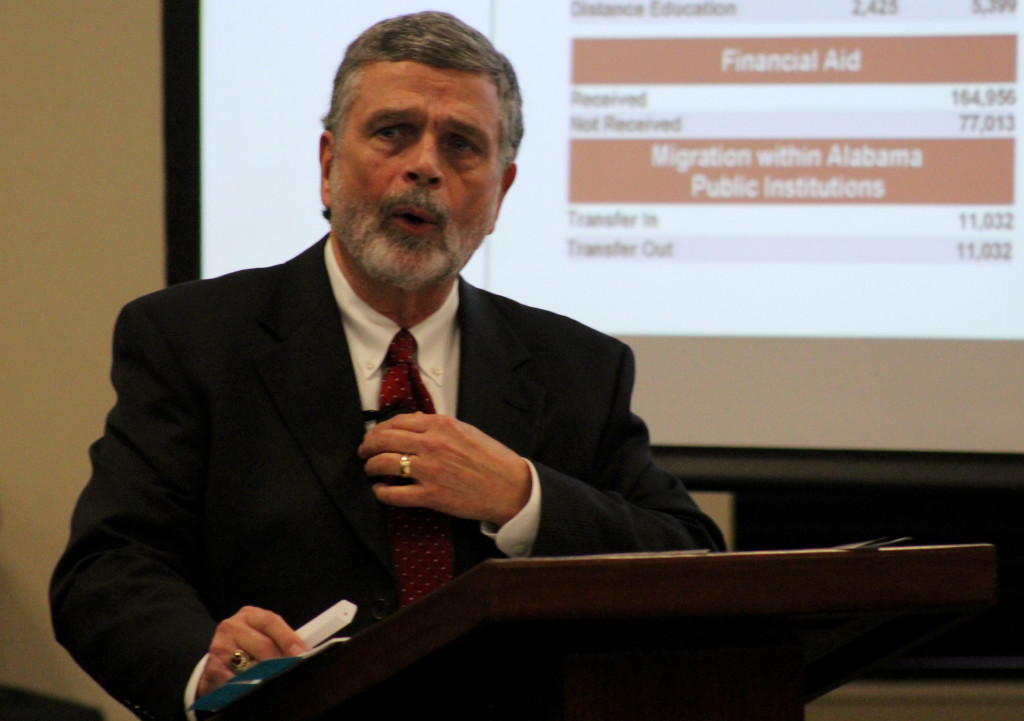
Gregory G. Fitch announced his retirement as executive director of the Alabama Commission on Higher Education (ACHE) Wednesday, ending a 45-year career in education. Fitch, who has been at the helm of the state’s coordinating board for higher education since July 2006, will end his career with ACHE Dec. 31. “As I begin this next chapter of my life, I will miss working with the excellent ACHE staff members and the outstanding higher education institutions in Alabama,” said Fitch. “I want to thank all of the commissioners that I have been privileged to work with since I came to Alabama and for the many opportunities that I have been given.” ACHE Vice Chairman Randy McKinney of Gulf Shores has been appointed to lead the search committee to find a replacement. Other members are Ed Sanders (Jasper), Charles Buntin (Dothan), Miranda Frost (Huntsville), and Bill Jones (Alexander City). Prior to his arrival in Alabama, Fitch was the State Higher Education Executive Officer (SHEEO) in both Missouri and Idaho. He was founding president of the Utah College of Applied Technology and president of three other community colleges in Nebraska, Washington, and Oklahoma. Commission Chairman Charles Ball praised Fitch for the work he has done while at ACHE. “Dr. Fitch has brought a high level of experience to the agency during times of budget cuts and challenging educational issues,” Ball said. “He always has had the best interests of students at heart.”


